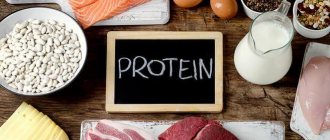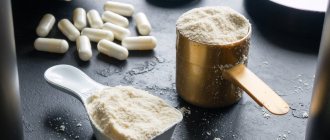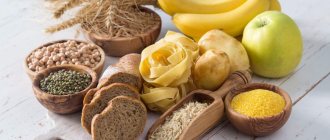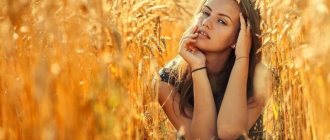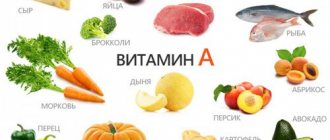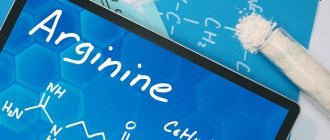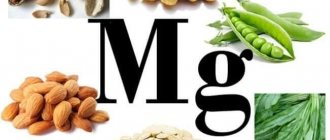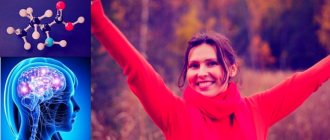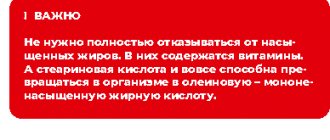Pharmaceutical preparations with iodine
Iodine is an essential microelement that our body urgently needs. Due to an unbalanced diet, a lack of this halogen in water, soil, and air, we experience a deficiency of the most important substance. The result is poor health and even serious illness. To protect yourself from many diseases, it is necessary to compensate for iodine deficiency, and constantly. It is important to find out which foods are high in iodine so that you can regularly include them in your diet.
Why does the body need iodine?
Iodine is required for the normal functioning of the thyroid gland, which is responsible for the condition of the entire body. Without it, the thyroid gland will not be able to produce hormones. This is the only trace element involved in the synthesis of thyroxine and triiodothyronine. And the work of all cells in the body depends on these hormones: from hair follicles to the egg.
Up to 90% of the iodine supplied with food is used to produce thyroxine. This hormone controls metabolism, the functioning of the heart, liver, circulatory and nervous systems. It is necessary for psychological health and the normal emotional state of a person.
Thyroid hormones control the most important processes in the body:
- metabolism, breakdown of fats and carbohydrates;
- development of all organs and tissues;
- heat exchange, regulation of body temperature;
- oxidative processes;
- decreased insulin levels;
- arterial pressure;
- maintaining immunity;
- hormonal balance in women (menstrual cycle, ability to conceive and bear a child).
These hormones, and therefore the presence of iodine in the body, are especially important for expectant mothers, babies and adolescents.
Who needs iodine-containing products for the thyroid gland?
Iodine enters our body with food. The microelement content in the human body is 20–50 mg. The daily requirement for a micronutrient varies depending on the age, weight and condition of the person (Table 1). If you calculate the daily requirement for a microelement by weight, it is about 3 mcg per 1 kg of body weight.
Table 1 - Daily iodine requirement
| Age/condition | Daily requirement, mcg |
| Children under 2 years old | 50 |
| Children 2 – 6 years old | 90 |
| Children 6 – 12 years old | 120 |
| Children over 12 years old and adults | 150 – 200 |
| Women during pregnancy and lactation | 250 |
With insufficient iodine content in the body, the synthesis of thyroid hormones is disrupted, and, as a result, metabolic failures occur.
Doctors recommend enriching the diet with foods containing iodine for the following population groups:
- people living in iodine-deficient areas (regions where there is insufficient iodine content in the soil and water);
- women during pregnancy and lactation (these conditions are accompanied by an increased need for the element);
- adolescents during puberty (thyroid hormones play an important role in the processes of development, growth and puberty of the body);
- women during the postmenopausal period (hormone imbalance increases a woman’s susceptibility to the development of endocrine and other diseases);
- people who have insufficient iodine content in the body or suffer from primary (thyroidogenic) hypothyroidism.
In the first four cases, the consumption of iodine-containing products for the thyroid gland has a preventive purpose. In the latter, it is part of the treatment. Moreover, a diet for hypothyroidism can both complement drug treatment and have an independent therapeutic effect in the initial stages of the disease.
Iodine requirements for different categories of people
Iodine cannot be synthesized in the body: we receive this halogen only from the external environment, with food, drinks, and air.
An adult over 14 years of age should receive 150 mcg of the element per day. For pregnant and lactating women, the norm almost doubles - to 200-400 mcg. Until the sixteenth week, the embryo does not have its own thyroid gland, so from the first days of life it needs its mother’s hormones.
The required amount of iodine in the body of the expectant mother will avoid the risk of the baby developing congenital pathologies. These include mental retardation, abnormal formation of the organs of vision and hearing.
Symptoms and consequences of iodine deficiency
Lack of iodine is a dangerous phenomenon because it forces the thyroid gland to adapt to economical use of the mineral. As a result, the absorption of the substance by the organ increases and hypothyroidism develops.
Signs of iodine deficiency (view content):
- depression, sudden mood swings;
- weight gain;
- severe headaches;
- lethargy, loss of strength;
- sweating;
- dry skin;
- fragility and hair loss;
- deterioration of cognitive functions;
- violation of thermoregulation, increased sensitivity to cold, chills;
- constipation;
- lowering blood pressure and slowing heart rate;
- menstrual irregularities;
- kidney dysfunction;
- muscle weakness.
Iodine deficiency is especially dangerous during pregnancy, as it provokes disturbances in the formation of the fetus, skeletal deformation and other pathologies. In adults, as a result of iodine deficiency, endemic goiter develops, and the risk of neoplasms and diseases of the thyroid gland increases.
Iodine deficiency: how to recognize
According to statistics from the Ministry of Health, 70% of Russian residents are iodine deficient. Information from the World Health Organization is even more alarming: 80% of the population and more than 30% of schoolchildren suffer from iodine deficiency.
The first signal is general malaise, which often has signs of dystonia: weakness, bad mood, frequent colds. At this stage, the shortage is compensated by reserves in the thyroid gland. The next stage in the development of iodine deficiency is an increase in the size of the thyroid gland. Due to this, the body tries to compensate for the problem and speed up the production of hormones. Gradually the situation is getting worse.
Signs of acute iodine deficiency:
- Slow metabolism, weight gain.
- Chronic fatigue, apathy, drowsiness.
- Arrhythmia.
- Poor immunity.
- Swelling, puffiness.
- Reduced blood pressure.
- Failure of the menstrual cycle, inability to become pregnant and bear a child in women.
- Mental disturbances: decreased attention, memory impairment, disorientation in space.
- Deep depression.
- In children - growth retardation and arrest, disturbance of body proportions.
We recommend watching a video about iodine deficiency:
Iodine deficiency and excess
Up to 70% of the Russian population suffers from microelement deficiency. The following signs indicate iodine deficiency:
- lethargy, increased fatigue, tiredness;
- tearfulness, irritability, especially in the morning;
- hypothyroidism or endemic goiter.
Lack of iodine in foods is a possible cause of high blood pressure.
A simple test to determine micronutrient deficiency:
- In the evening, before going to bed, soak a cotton swab in an alcohol solution.
- Draw three lines on the forearms: thin (about 1mm), medium (2mm), thick (3mm).
In the morning:
- If the thin one has disappeared, there is no deficiency.
- The thin and medium ones have disappeared - a slight shortage.
- All the lines have disappeared – iodine deficiency.
Excess of a trace element is rare. Signs: increased mucus in the nose, cold symptoms, hives, other manifestations of allergies.
Features of iodine absorption
Unlike most microelements, iodine is quite “independent”: the presence of other chemicals is not necessary for its absorption. But still, a number of conditions can affect this process.
Iron, zinc, cobalt, manganese, copper, calcium and selenium contribute to successful absorption. Vitamins A, C, E and D and a high protein diet also have a beneficial effect.
But fluorine, bromine, chlorine, as well as goitrogenic substances can interfere with and slow down the process of absorption of this microelement in the intestines. They are found in radishes, soybeans, all types of cabbage, broccoli, beans, carrots, turnips, radishes, and flax seeds.
How to make up for the deficiency
We get up to 90% of iodine from food (60% from animal products and 30% from plant products), the remaining 10% from water and air.
Residents of coastal areas are in the most favorable conditions. Here the soil, air, and food are saturated with vital halogen. But even those who live far from the sea can structure their diet in such a way as to receive the required daily requirement.
To help - a properly composed menu, as well as iodized salt and various dietary supplements. For example, a teaspoon of iodized salt contains almost 400 mcg of microelement, which will more than cover the daily requirement. Mineral water is also a valuable source of natural iodine.
When creating a daily menu, it is important to find out which foods contain a lot of iodine.
Sea kale
Just 100 grams of seaweed per day - and the daily requirement for iodine is met. It is not surprising that cabbage has a characteristic iodine smell - there is a lot of iodine here, and it is also easily absorbed. In addition to iodine, you can get vitamins A, E, C, group B, as well as iron and magnesium from cabbage.
Millet and seaweed casserole
200 g seaweed 1 cup millet 2 onions 4 tbsp. butter 2 eggs 3 tbsp. sour cream 3 tbsp. bread crumbs 100 g grated cheese
Step 1. Rinse the millet thoroughly and cook a viscous porridge (for 1 cup of cereal - 3 cups of water). Step 2. Fry the onion in vegetable oil and add to the porridge. Cool until warm. Step 3. Add seaweed and eggs to the porridge. Place in a mold greased with butter and sprinkled with breadcrumbs. Step 4. Mix cheese with some crackers and sour cream. Place on top of the casserole and smooth out. Step 5. Bake in the oven for 15 minutes at 200 C.
Foods high in iodine
It is logical that fish and seafood contain the most iodine. These are all the inhabitants of the sea: mackerel, herring, cod, tuna, salmon, salmon, squid, mussels, oysters, octopus, shrimp and crabs. It is advisable to include seaweed in your diet: seaweed and nori.
But you can get this microelement in almost every food group. Vegetables and fruits contain a lot of iodine, and not necessarily those growing on the coast. These are spinach, tomatoes, eggplants, potatoes, sweet peppers, carrots, beets, and legumes.
We recommend watching a video about iodine-rich foods:
Persimmon
There is quite a lot of iodine in persimmon, although not as much as in seaweed. But many more people like persimmon. In addition to beneficial iodine, it contains magnesium, sodium, iron (in terms of their content it surpasses even apples, the well-known healthiest fruit), as well as vitamins A, C and P.
Persimmon mousse
3 persimmons 1 glass of sugar ½ packet of gelatin 2 tbsp. lemon juice 1.5 cups water
Article on the topic
Salads, side dishes, casseroles and pies. What to cook from persimmons Step 1. Wash the persimmons, cut into quarters, remove the seeds. Step 2. Fill with water, add lemon juice. Leave for half an hour. Step 3. Boil in the same water for 15 minutes. While it is boiling, soak the gelatin in ½ cup of cold water. Step 4. Rub the boiled persimmon through a sieve. Pour the strained broth into it, add sugar and add gelatin. Mix. Step 5. Cool the finished mass to a temperature warmer than room temperature, then beat until thick foam. Step 6. Pour into molds and place in the refrigerator to set.
Iodine content in food
| Product | Iodine content (mcg per 100g) |
| Seafood | |
| Sea kale | 300 |
| Squid | 200 |
| Cod | 135 |
| Shrimps | 110 |
| Perch | 60 |
| Pink salmon, flounder, chum salmon, roach, tuna, salmon, salmon | 50 |
| Mackerel | 45 |
| Herring | 40 |
| Dairy and eggs | |
| Chicken egg yolk | 33 |
| Chicken egg | 20 |
| Chicken egg white | 7 |
| Milk, cream, kefir, yogurt | 9 |
| Sour cream | 7 |
| Cereals, grain products, nuts and legumes | |
| Beans | 12 |
| Pistachios | 10 |
| Rye (grain), barley | 9 |
| Soybean (grain) | 8 |
| Oat flakes "Hercules" | 6 |
| Walnut | 5 |
| Millet, buckwheat | 5 |
| Fruits, vegetables, dried fruits, herbs | |
| Cranberry | 300 |
| Feijoa | 70-200 |
| Apples with grains | 70 |
| Persimmon | 30 |
| Spinach | 12-20 |
| Radish, lettuce, grapes, garlic | 8 |
| Beet | 7 |
| Potatoes, carrots | 5 |
| Tomato, eggplant | 2 |
Buckwheat
Perhaps the most useful and favorite cereal in Russia. Buckwheat also contains iodine; in terms of its content, it is a champion in the world of cereals. In addition, buckwheat contains many useful vitamins and microelements that will help absorb iodine.
Buckwheat in field conditions
1 cup buckwheat 2 cups water 1 can of stewed meat 1 bell pepper 2 tomatoes 2 cloves of garlic
Step 1. Heat the buckwheat in a dry frying pan with a thick bottom, pour boiling water over it and cook. Step 2. Fry the onion in a frying pan, then add finely diced pepper to it, fry everything together, then add tomatoes, cut into small pieces, and add salt. Cover with a lid and simmer. Step 3. Open the stew, cut it with a knife directly in the jar and place it with the vegetables. Fry everything, stirring. Step 4. Add cooked buckwheat to fry. Add salt and pepper to taste. Serve with green salad.
Pharmaceutical preparations with iodine
If the diet is not rich in iodine-containing products, dietary supplements will come to the rescue.
These can be either vitamin complexes with a wide range of elements (AlfaVit, Multi-tabs, Centrum, Vitrum, Complivit: multivitamins + iodine, Vitamins for children), or oligocomponent or single-component preparations (Iodomarin, Iodine-active).
There are also special complexes for expectant mothers (Vitrum Prenatal, Alphabet Mom's Health, Materna, Multi-tabs Perinatal).
Since iodine is better absorbed in combination with vitamins, selenium, copper and zinc, you can give preference to multivitamins. Then you will get other healthy elements.
But single-component drugs also effectively replenish iodine deficiency. Therefore, the choice of iodine-containing supplements is an individual matter. It is best to consult your doctor before purchasing a multivitamin complex.
